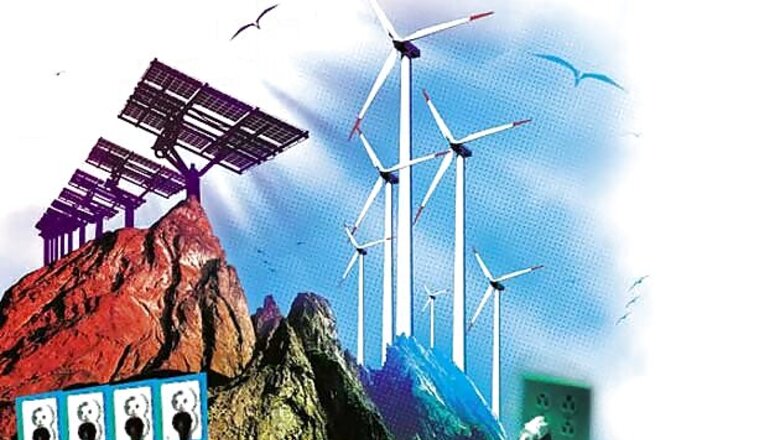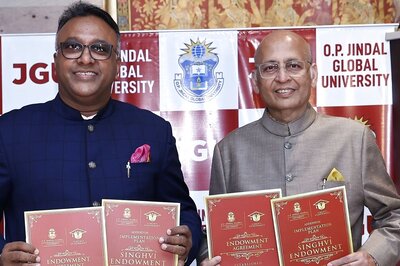
views
I think wind technology is headed upwards. The industry has improved the performance of both turbines and blades, and this technology will continue to improve, yielding better economics for customers.
Changing government policies have not been kind to renewable energies over the past two years, and both solar and wind energies are heavily dependent on subsidies. 2010 was a tough one for the wind business, with government support declining markedly, thus affecting demand. In 2011, demand and pricing stabilised for wind, but solar energy experienced what may be the worst year in its history. 2012 will be marginally better for solar, but only marginally.
Fortunately, over the long term, there will be place for both these technologies in a country's energy portfolio. Wind power is already economic in terms of cost per watt, but its output curve doesn't match the consumer demand curve very well. Therefore, its energy storage technology has to improve. Solar's output curve closely matches demand in most countries, but its cost per watt has to get a whole lot better.
So, what happened to solar energy? Subsidies were under pressure, particularly in the large European markets. Demand in the US did not pick up as anticipated, adding further pressure. Then, there was an incredible amount of overcapacity in the solar industry, leading to cut-throat competition, (pushing) prices down. The last thing to happen was the fall in the price of polycrystalline silicon, which crashed to $38-45 a kg. You would think that the declining raw material cost would help the profitability of an industry. But, in this case, the decline was so great that it upset the underlying economics.
The long-term, average price of electronic grade crystalline silicon is $45 a kg. There have been troughs — $25 a kg in 2002 — and peaks — $450 a kg in 2009. Adding polysilicon capacity is expensive and, because it's nearly impossible to marginally increase output, adding capacity shocks the supply-demand balance. The industry swings between periods of ‘feast and famine' but what was unusual this time was that instead of the semi-conductor industry driving the economics, it was the solar industry.
A lot of manufacturers in the solar value chain based their strategies on the high price of silicon that existed in 2008 and 2009. But when the prices of polycrystalline silicon fell, all those projects became unviable. Almost 80 per cent of global solar panels are based on some kind of metallic silicon technology. The remainder uses thin film technology. Most thin film companies had come up to provide a substitute to the expensive polysilicon and had based their plans on the price of silicon remaining at $100, $200 or even $400 a kg. When the price of polysilicon crashed, they lost their reason for existence.
So, there was reduced demand because of lower government subsidies, massive overcapacity among the silicon-based manufacturers, and a surfeit of new, thin film manufacturers. A perfect storm.
Where wind power is concerned, it is employed as a centralised generating system. Wind tends to be very efficient if there are very large turbines that are concentrated. After hydroelectric power, wind is the cheapest renewable energy source. Unfortunately, wind power peaks twice a day, and these peaks don't match the demand curve. Solar energy, although more expensive, has two advantages: First, it produces power when demand is maximum and, second, it is very scalable (a 50 panel installation can have almost the same cost per watt as a 500 panel one). It is great technology for ‘point of use'. So, if you have large government building with a flat roof, put solar panels on top.
I have never been an advocate of large solar farms that have to distribute power over the main grid. Solar electricity is perhaps the most expensive in terms of dollars per watt. Solar power itself can cost between 12 and 16 cents a kilowatt-hour. This is comparable to what an individual in California pays for the grid power at about 20 cents a kilowatt-hour. But this is the cost of solar power at the point of manufacture. When you create a solar farm and try to distribute it over hundreds of miles, it just becomes too expensive. Without heavy subsidies, a solar farm that mimics a centralised generating system is absolutely uneconomical. Some subsidy is okay, but basing an industry on long-term continuing subsidy is not a good idea.
Don't get me wrong. Solar can be a perfect solution for a village that hasn't been touched by electricity. Put up a small solar farm and create a local grid to supply power. But don't try and run the power over the main grid.
An efficient coal plant may cost 2.5 cents a kilowatt-hour (kWh); a nuclear plant is 4-6 cents a kWh; wind power can be 5-7 cents per kWh, and solar at least double that. And, of course, wind and solar output are both governed by nature. The flip-side is that both are zero-carbon, renewable power sources that don't depend on imported energy sources. Most countries will want to use both in some measure.
Harry Shimp is founder of Charon Industries and has over 30 years of experience in the management of high technology manufacturing companies. He has four US patents and seven more pending.
(As told to Shishir Prasad)




















Comments
0 comment